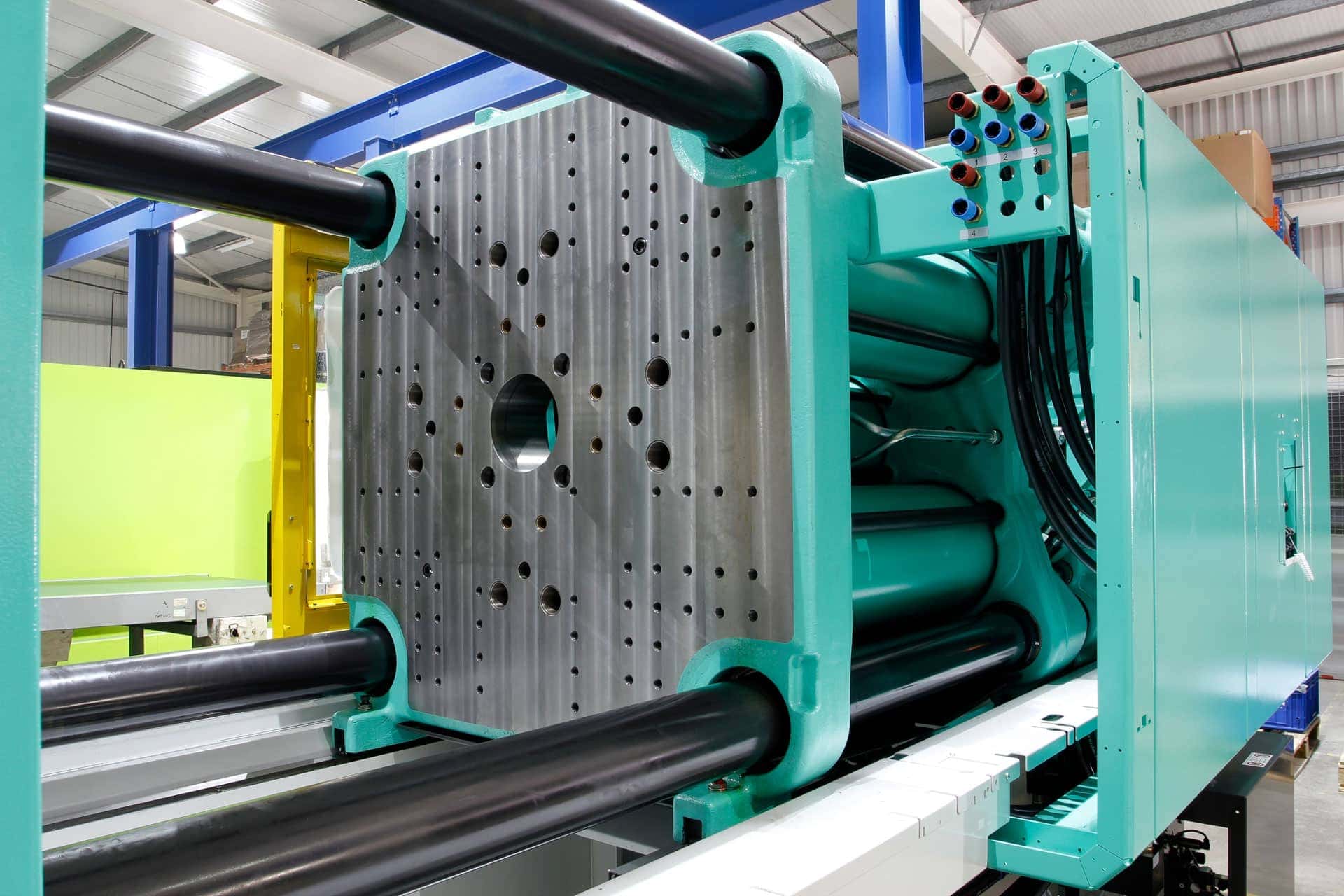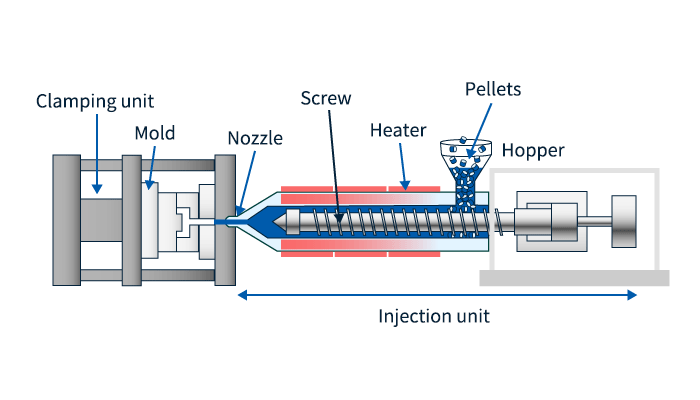Why Plastic Injection Molding Is Necessary for Accuracy and Longevity
Why Plastic Injection Molding Is Necessary for Accuracy and Longevity
Blog Article
Recognizing the Essentials of Plastic Injection Molding Processes
Plastic injection molding offers as a keystone of modern manufacturing, offering a systematic strategy to generating complex elements with accuracy. This procedure not only includes the fundamental steps of melting and injecting materials into molds however likewise includes a nuanced understanding of different affecting aspects, such as temperature level and stress. As sectors increasingly demand efficiency and quality, the ins and outs of this method come to be extra critical. Exploring these important aspects might reveal how even minor changes can lead to significant renovations in manufacturing end results, elevating concerns regarding the potential for innovation in this established process.
What Is Plastic Injection Molding?
Plastic injection molding is an extensively used production process that changes thermosetting and polycarbonate materials into precise and intricate shapes. This method is preferred for its capability to generate high quantities of identical components with outstanding accuracy, making it a vital method in different sectors, consisting of automobile, customer items, and medical gadgets.
The procedure involves melting the selected plastic product and injecting it into a mold and mildew under high stress. The mold, developed to the requirements of the desired component, enables the liquified plastic to materialize as it cools down and solidifies. Once the product has actually set, the mold and mildew is opened, and the ended up component is expelled.
Plastic shot molding uses a number of benefits, consisting of reduced waste, uniformity in production, and the capability to integrate intricate styles that might be testing with other producing approaches. In addition, it supports a wide variety of materials, each providing special properties that can be tailored for particular applications. As industries remain to innovate, plastic shot molding remains at the center, enabling the development of sophisticated items that satisfy evolving customer needs.
The Shot Molding Process
The shot molding procedure is an advanced method that includes a number of vital stages to generate top notch plastic elements. Plastic pellets are fed into a warmed barrel where they are melted into a viscous fluid. This molten plastic is then injected under high pressure right into a precision-engineered mold and mildew, which forms the product right into the desired type.
When the mold and mildew is filled, the plastic is permitted to solidify and cool down, taking the form of the mold dental caries. Cooling time is crucial, as it impacts the cycle time and the final residential or commercial properties of the shaped part. After adequate air conditioning, the mold opens, and the ended up part is ejected making use of ejector pins.

Materials Utilized in Shot Molding
Numerous products can be made use of in the shot molding process, each offering special homes that accommodate details applications. The most typically utilized products include thermoplastics, thermosetting plastics, and elastomers.
Thermosetting plastics, like epoxy and phenolic resins, undertake a chemical modification throughout the healing process, resulting in a rigid, stringent framework. These materials are ideal for applications requiring high warmth resistance and architectural stability, frequently utilized in electric insulators and auto components.
Elastomers, including silicone and rubber-based materials, offer flexibility and resilience. Their unique residential or commercial properties make them appropriate for applications that demand elasticity, such as gaskets and seals.
In addition, specialty products like bio-based plastics and composites are acquiring traction for their environmental benefits and improved efficiency attributes, widening the extent of shot molding applications in numerous sectors. Understanding the homes of these products is vital for picking the proper kind for details tasks.
Benefits of Shot Molding
Injection read here molding sticks out as an extremely effective manufacturing process that offers various advantages for producing complex get rid of precision. Among one of the most substantial advantages is the capability to create complex layouts that would certainly be impossible or challenging to attain with various other techniques (Plastic Injection Molding). The process allows for tight resistances and thorough functions, making sure high-grade parts
Furthermore, injection molding is recognized for its quick manufacturing capacities, making it an excellent selection for high-volume manufacturing. When the mold is developed, components can be generated promptly, lowering lead times next and boosting general efficiency. This efficiency not just lowers production costs yet likewise offers a competitive side on the market.
The convenience of products used in injection molding further boosts its appeal. A wide array of thermoplastics and thermosetting polymers can be utilized, permitting producers to pick materials that ideal satisfy their particular demands, consisting of versatility, stamina, and warm resistance.
In addition, the process decreases waste, as excess material can typically be recycled and recycled. This sustainability element adds to a lowered ecological influence, making injection molding a liable production choice. Overall, the advantages of shot molding make it a favored method for several markets.
Elements Affecting Product High Quality
While countless variables can affect product top quality in shot molding, recognizing these components is critical for attaining optimum results. Trick facets include material choice, processing parameters, and mold and mildew style.
Material option plays an essential function, as various polymers show one-of-a-kind residential or commercial properties that influence flowability, strength, and thermal stability. Inadequate material choice can result in problems such as bending or insufficient dental filling.
Processing parameters, including pressure, temperature level, and cycle time, have to be diligently managed. Variations in these settings can cause disparities in component dimensions and surface finish. As an example, excessively high temperatures might trigger deterioration of her comment is here the polymer, while poor pressure can result in brief shots.
Mold design is just as crucial, as it identifies the circulation of the molten plastic and the cooling process. Poorly made mold and mildews may bring about unequal air conditioning rates, causing residual tensions and dimensional errors.

Conclusion
Finally, plastic shot molding serves as a vital production procedure that allows the efficient production of premium elements. Mastery of the injection molding process, including the understanding of products and the influence of various elements on product quality, is important for achieving optimal outcomes. The benefits of this technique, such as cost-effectiveness and design flexibility, more emphasize its relevance across multiple industries, strengthening its condition as a preferred choice for high-volume manufacturing.
Plastic shot molding offers as a cornerstone of modern-day production, offering a systematic technique to producing intricate elements with precision.Plastic shot molding provides several benefits, including lowered waste, consistency in manufacturing, and the ability to incorporate detailed designs that might be challenging with various other producing techniques (Plastic Injection Molding). As industries continue to innovate, plastic injection molding remains at the leading edge, enabling the growth of advanced items that meet advancing consumer needs
The injection molding procedure is an advanced strategy that involves numerous key phases to produce top notch plastic components.In final thought, plastic shot molding serves as an essential manufacturing procedure that enables the effective manufacturing of high-quality elements.
Report this page